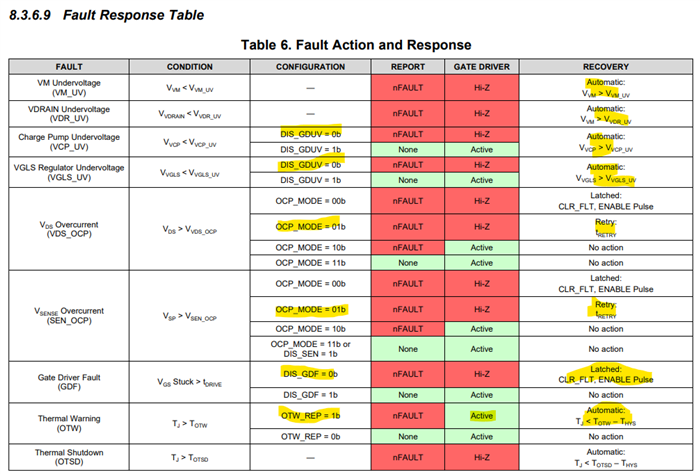Hello
We have integrated the DRV8353HRTAT module into one of our products under development and we are unable to get it started. We always have the fault condition present some time after the "Enable" signal is triggered.
1. What happens if we put all inputs (INLx, INHx) to 0? Will the fault signal be triggered?
2. FAULT is active by entering any mode (Digital inputs at very low speed); Synchronous PWM at 10, 15, 20 Khz (dead time of 600 ns)
3. The FAULT condition is not reset by introducing a low signal for 30us. It only resets for a moment when we come from sleep mode (1ms)
- Could you tell me how we can verify the correct operation of the module? I need to know the value of inputs that we should put.
- Should we test it with a motor connected to the power stage or should it not be necessary?
The driver configuration is as follows:
VM: 12V (not the same as DRAIN)
VDRAIN: 24V
FAULT: Pull-up to 3.3V (10K)
IDRIVE: Pull-up to DVDD (18K) -> Mode 6
VDS, GAIN: 0 ohms to DVDD (Overcurrent protection disabled - 40V / V)
VCP: 1uF to VDRAIN
VREF: 3V
The MOSFET gate characteristics on the power stage is
No gate resistor (IDRIVE control current)
Vds: 100V
Rdson: 1.5mOhm
Gate charge total: 211 nC
Worst Case Threshold: 4.3V



